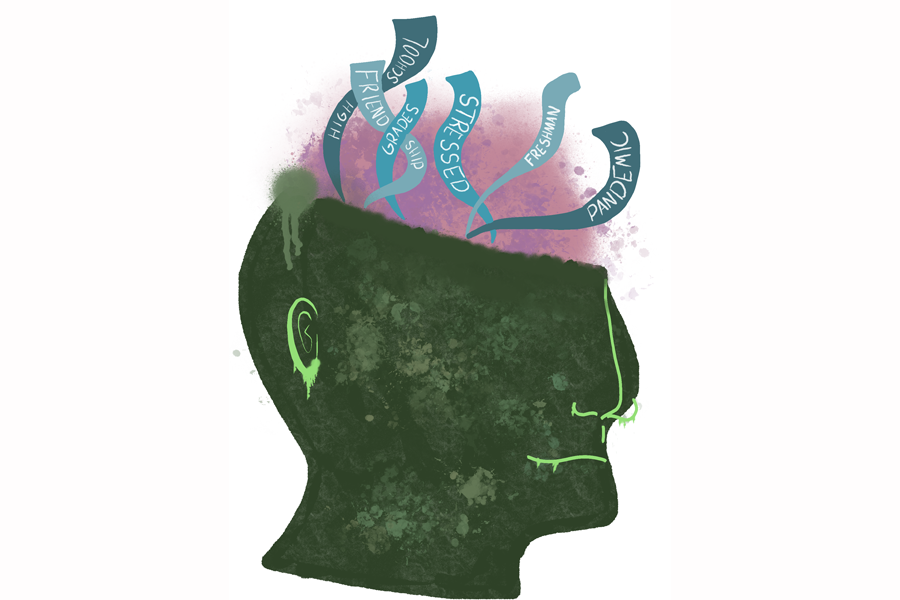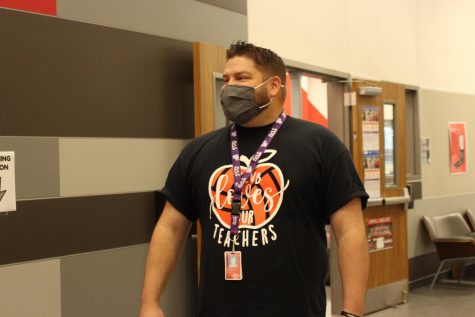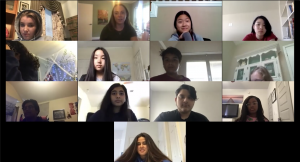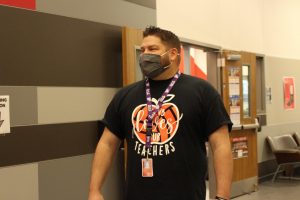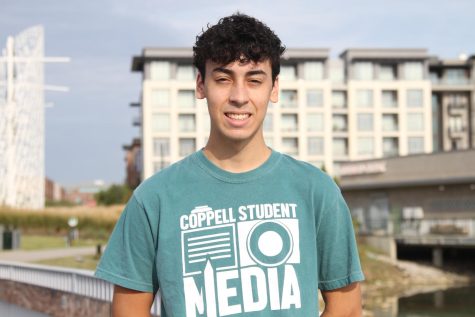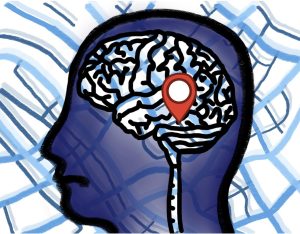Pandemic makes for challenging one-year experience for freshmen
Transitioning into high school can be a daunting task for oncoming middle school students. This can intensify when students are dealing with the troubles of a poor state of mental health that can come along with a pandemic.
May 13, 2021
“This year has been crazy.”
CHS9 student Sunya Ajani began the first nine weeks of her freshman year virtually and switched to in-person school in the second nine weeks for the remainder of the year.
“[I had] these expectations like, ‘Oh my god, high school is gonna be so much fun,’” Ajani said. “[The pandemic] affected everyone in the way that we don’t want to do work, and we just feel less motivated.”
The coronavirus pandemic has caused an increase in mental health concerns for students, with studies citing that the pandemic will affect students for years after it passes. Higher rates of stress, anxiety and depression have been plaguing students and educators across the nation since March 2020, when many school districts, Coppell ISD included, shifted to virtual learning.
“We wouldn’t see as many students worrying about friendships or friend groups,” CHS9 counselor Katie Walker said. “Before [the pandemic], we would probably see a lot more [concerns about] grades. [Students would be] a little bit more proactive instead of reactive to the grades. We’ve really had very few students looking toward the future and this pandemic has really impacted that idea that we should be looking forward. That’s hard when you’re starting high school, when you have to start really looking through what’s gonna happen next.”
Some of the stressors students are experiencing due to COVID-19 include social concerns, such as feeling lonely or friendless, health concerns with risk of being exposed or exposing loved ones to the virus and academic concerns, such as a lack of focus in class.
“Focusing on what was going on in my classes was really hard because you have all those external factors at home,” Ajani said. “Any moment [at home] you can really just walk away from your computer and leave what’s going on. In person, that stress kind of is relieved in a way where you’re still retaining more information. In person I was able to ask my teacher questions, interact with other students and get help.”
Walker sees a difference in the mental health of in-person and virtual students.
“Mental health is such a big spectrum,” Walker said. “I will say that when it comes to mental health, I’ve seen more in person students just in my office and have worked with them more one to one. But that’s not to say that there’s not a need in our remote population. There’s probably a bigger need than we see. However, it’s harder for them to reach out.”
For Walker, assessing the needs of a virtual student is much more difficult than an in-person student.
“[For in-person students], a teacher can reach out to me and let me know or another student will let me know,” Walker said. “[At home], usually, if they’re doing fine in their classes, typically, I’m not going to get involved unless they reach out for me or a parent reaches out to me. But if I don’t have any of that information, it’s really hard to service [remote] students.”
Freshmen face the added social pressure of the “freshmen experience”, a phrase used to describe the opportunities students are exposed to in high school.
“You get your vision of your high school experience from social media and movies, where you feel like these kids are having so much fun being with their friends and walking around in the hallways,” Ajani said. “Not being able to have that social interaction kind of just really brings that down. Homecoming football games, pep rallies, all those, we didn’t really get to participate in them, even though those are the top things that we were looking forward to in middle school.”
With the freshmen experience comes the academic and social transition from middle to high school, which for many, due to the nature of virtual learning, felt nullified.
“It’s just done a complete 180,” Walker said. “It’s hard for students because we are a single campus and students don’t feel like they’re already a part of the high school, they just feel like it’s just another step [of middle school]. And [with] a lot of kids isolated, they’re going to look back on this and look at it in a very monotone way.”
Despite the negative aspects of the pandemic, many students have been able to find positives to focus on.
“I’ve been able to spend more time on myself,” Ajani said. “I’m spending more time with the people I know I can trust. The most positive aspect of this year was the fact that I was really able to focus on what I want to do in life, rather than focus on what everyone else wants me to do in my life.”
Follow Akhila (@akhila_gunturu) and @CHSCampusNews on Twitter.



